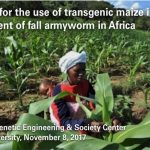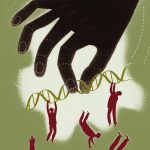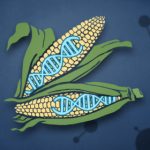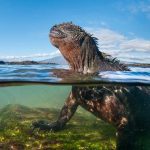
Genetic Engineering may not solve Africa’s fall armyworm problems
The fall armyworm which is a major pest of corn in the western hemisphere has become an invasive pest in Africa in the past few years. Some groups are calling for use of Bt corn as a solution. In this video Dr. Gould describes why it would take great dedication and large resources in money and people to use this approach in an equitable and sustainable manner....Continue reading "Genetic Engineering may not solve Africa’s fall armyworm problems"

Jason Delborne addresses CRISPR gene drives controversy in NYTimes, Quanta, and Gizmodo
GES Faculty member Jason Delborne addresses two controversial new papers in several articles published this week on the safety of field testing CRISPR gene drives in the wild. With links to articles in New York Times, Quanta, Gizmodo and The Atlantic....
Politics “Trumps” Science in the Regulation of Genetically Engineered Crops
In recent years, the regulatory system for biotechnology products has not kept pace with newer ways of engineering organisms, such as through the use of gene editing like CRISPR-Cas9 systems. Under the Obama administration, progress had been made in clarifying U.S. biotechnology regulations. In January 2017, in the last few days of Obama’s term, several proposals were made for updating agency regulations and guidance documents. In particular, new US USDA regulations were proposed for GE crops. Fast forward ten months, and the Trump administration has pulled this proposed rule back to “start fresh” and reconsider the issue. This is no surprise, as it is not uncommon for new political administrations to recall regulatory policy for biotech. Many industry and academic scientists developing GE crops are pleased to hear about the Trump administration’s recall of USDA proposed regulations....Continue reading "Politics “Trumps” Science in the Regulation of Genetically Engineered Crops"

Genetic Literacy Project: USDA scraps overhaul of GMO and gene edited crop regulations that biotech advocates viewed as ‘unscientific’
“I think the real reason [for the withdrawal] is that the new proposed rule would have brought more gene-edited crops under its authority,” stated Kuzma. “And this new administration isn’t too fond of regulations in general.”...
Scientific American: Could Genetic Engineering Save the Galápagos?
Campbell first became intrigued by the possibilities of gene drive in 2011, when he sat in on a conference call between biologists at NC State University and officials of the U.S. Fish and Wildlife Service to discuss a possible genetic approach to control a runaway mouse problem on Southeast Farallon Island, about 20 miles west of the California coast, near San Francisco. John Godwin, a North Carolina State neurobiologist who studies animal behavior, had learned of the Farallon issue while skimming the Internet in 2011. He happened to be at a university with an established infrastructure dedicated to experimenting with—and considering the ethical implications of—genetic manipulation....Continue reading "Scientific American: Could Genetic Engineering Save the Galápagos?"

Our (Possible) Genetic Futures
As crowds poured into Raleigh’s contemporary art museum during the April 2017 art walk, one white wall began to fill with hand-written messages scribbled on neon Post-It notes. Above was a sign: Write down one word describing how you feel about your genetic future....OECD Co-operative Research Programme Funded Workshop
Environmental Release of Engineered Pests: Building an International Governance Framework October 5 – 6, 2016 Agenda Download PDF Impetus for the Workshop There has been intense research and development of new gene drive technologies, with...Continue reading "OECD Co-operative Research Programme Funded Workshop"